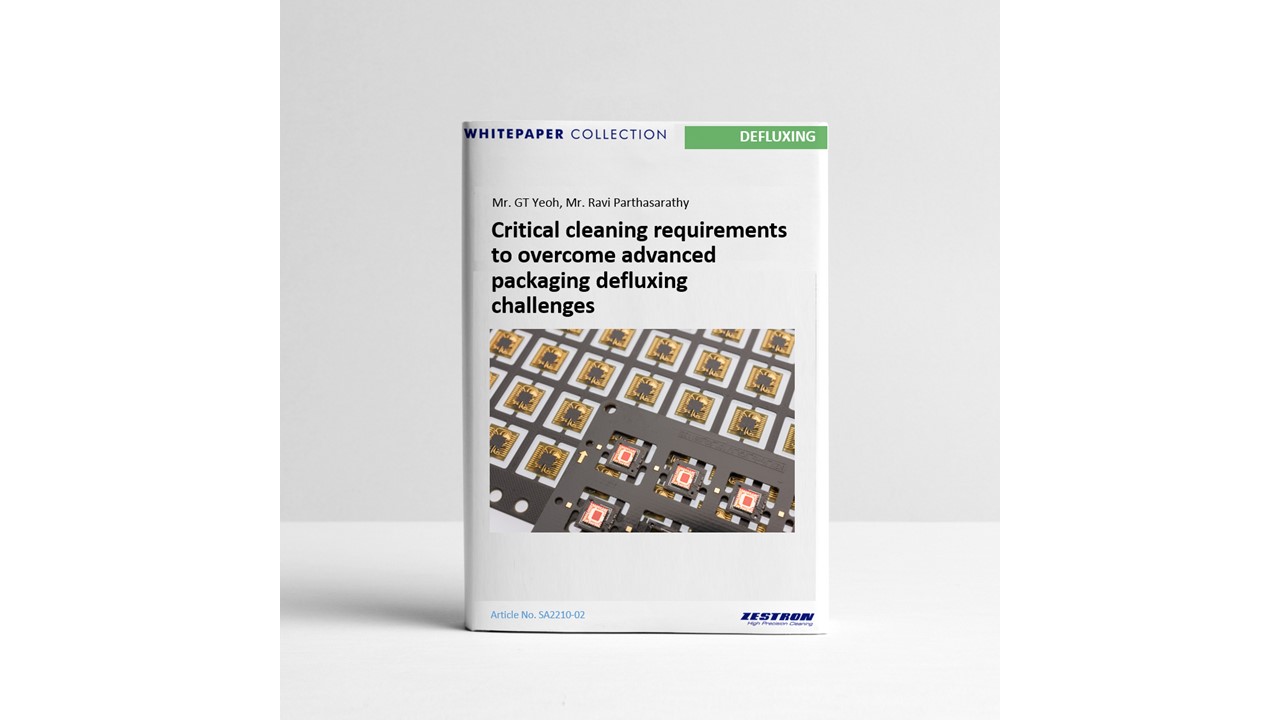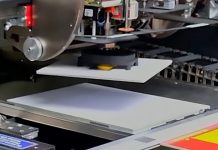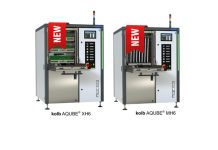ZESTRON, the global leading provider of high precision cleaning products, services, and training solutions in the electronics manufacturing and semiconductor industries, is pleased to release the whitepaper “Critical Cleaning Requirements To Overcome Advanced Packaging Defluxing Challenges”
Whitepaper Abstract:
As technology advances, wafer-level packages have emerged in many different varieties. Computing has evolved significantly over the years. Chips integrated with additional functionalities to improve performance, processing challenges, storage and networking has become standard. The development of the packages such as SiP, fcBGA, PoP, 2.5D, etc. which utilizes multiple or larger die sizes, increased bump counts, lower standoff height and a large variety of components on the packages have reduced the effectiveness of cleaning. The common packaging interconnect is using solder and die attached to a substrate by a solder reflow process. The flux residues after soldering pose a cleaning challenge, especially underneath these extremely low-profile components. As standoff height reduces, flux residues have less area to outgas during reflow. Typically, the standoff height is <100µm and it continues to shrink further. For some components such as QFNs, LGAs, the large thermal pad at the center of the component body poses barriers to the complete removal of the flux residues. Partially removed or untouched residues can lead to reliability failures as consequences of electrochemical migration and dendrite growth as well as electrical leakage currents. Effective cleaning improves product reliability by ensuring optimal condition for subsequent processes, such as wire bonding, underfill and molding. This paper discusses the breakthrough in cleaning challenges for advanced packaging, especially when addressing factors like high density assemblies, latest flux formulation and low standoff heights. The most common cleaning system used for cleaning advanced packaging substrate is a conveyorized spray-in-air inline cleaning system. The discussion extends to how effectively the cleaning process needs to be balanced, in terms of chemical, mechanical and thermal energies. We will also explore the key cleaning parameters that lead to successful removal of flux residues from underneath the low-profile components. For example: nozzle types, spray pressure, chemical exposure time, cleaning temperature and type of cleaning agent. We will conclude with several customer case studies to validate the above findings.
To request for this free whitepaper, please click the link here: Request free whitepaper
For more information about Zestron, please email us at infoasia@zestron.com










